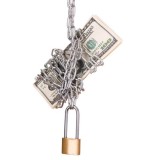Are credit card miles worth it? We look at a couple of articles in this roundup of frequent flyer credit card news and related tips. If you have seen the movie “Up in the Air” with George Clooney, you have seen some examples of tremendous perks provided by frequent flyer and credit card miles. He criss-crossed the country accumulating miles and tons of perks along the way.
But, for the rest of us that may not travel quite as frequently, are frequent flyer credit cards worth it? The answer, as in many things, unfortunately, is it depends. If you are going to actively go after the miles and have a plan for using them, absolutely.
[box_success]Start Earning Points and Miles Toward Your Next Big Trip – CLICK HERE to Visit our Partner Website and View a Great List of Travel Rewards & Frequent Flyer Credit Cards for GOOD and EXCELLENT Credit[/box_success]
Is a travel reward card worth it?
Commentary: This article does a great job of explaining the ins and outs of travel reward cards. After reading the article, you should be better prepared to answer the question: “Are frequent flyer credit cards worth it?”
Source: CNN Money
Hoping to snag a free trip by opening a travel rewards credit card? You’re not the only one. During the first part of the year and again at the start of summer are the peak times people start searching for travel credit cards. Since 2012, the first weeks in the new year have shown at least a 50% increase in searches for travel rewards credit cards over the rest of the year, according to Value Penguin.


Apply Online in Mins for the New PenFed PathFinder Rewards American Express Card and Earn:
(Ad Link)
-
All the benefits of a premium rewards card that typically costs around $95, but with no annual fee.
-
Our editors have rated this card with 4.5 stars
Can you afford the annual fees for a premium travel card?
The Chase Sapphire Reserve and the Citi Prestige, for example, each have $450 annual fees, while the American Express Platinum card has an annual fee of $550.
“The report just came out that most people don’t have $1,000 to pay for an emergency,” says Robert Harrow, credit card analyst of Value Penguin. “If that is you, you can’t be throwing away $450 on an annual fee for a credit card.”
Here’s Harrow’s rule of thumb: if you spend $12,000 a year or less on your card, you should only look at cards that don’t charge an annual fee.
A travel reward card with no fee, like the Chase Sapphire Preferred® Card, Capital One® Venture® Rewards Credit Card, or Discover It Miles card may be a better place to start.
Don’t expect to get miles points immediately. Sign-up bonuses often come with high spending requirements that typically span one to three months and can put card-holders in a bit of a financial pinch. The big bonus points usually come only after new card members have spent a certain amount on the card in the first few months. Once the points are earned, then the bank may take up to eight weeks to process and reward the points to your account. Typically, it takes about four weeks for the points to be added to the account.
Most credit card experts would agree that you do not want to carry balances when using travel cards, but more than half of people with travel rewards cards have carried a balance in the past year, according to a study by U.S. News. Travel cards tend to carry high normal interest rates, so although you could save money on the travel expense, initially, you could pay for it later in interest fees.
Click here for the full article from CNN Money.
Are Travel Rewards Worth the Annual Fee?
Commentary: This article provided a great checklist of factors to consider when deciding whether to get a travel rewards card with an annual fee. It puts the question to the test of whether travel rewards cards are worth the annual fee in comparison to rewards cards without an annual fee.
Source: LowCards.com
There are dozens of travel rewards 
Recent research from MagnifyMoney shows the average introductory bonus for travel credit cards is 40,556 points, more than double the 16,050 point average in 2008. But annual fees have also increased significantly. Travel credit cards with a bonus offer currently have an average annual fee of $120, up from $74 in 2008.
To determine if a travel card is worth its annual fee, you must consider several factors:
- How easy is it to earn points?
- Do my spending habits line up with the credit card’s rewards program? (Editor: This is a big one to consider before paying a hefty annual fee.)
- How much value do the points have?
- Do the points expire, and if so, when?
- Can I realistically earn enough points to offset the annual fee? (Editor: This is another big on to consider. If you are just going to break even or barely earn more than the annual fee, what’s the point?)
- Is there a card with a lower annual fee that would still provide the rewards I need?
- Where can the rewards be used? (airline miles, hotels, rental cars, etc.) (Editor: This also ties in with purchasing habits above. If the card does not provide rewards to the services you frequently purchase, you may not get as much bang for your buck.)
If you can earn significantly more rewards than the annual fee, it may be worth applying for that card. If your rewards barely cover the annual fee, you’re not really saving any money. At that point, you may be better off with a cash back credit card or other rewards program to get the best return for your personal expenses.
Click here for the full article from LowCards.com.
New Barclays Arrival Premier card: Worth a look if you love to travel
Source: Dayton Daily News
Are you trying to earn the most valuable travel rewards for every dollar you spend on your credit cards?
If you’re the kind of person who always avoids interest charges by paying your statement balance in full each month, you should be earning the most valuable rewards you can. Barclays (which used to go by Barclaycard), just introduced the Arrival Premier, a credit card that allows you to earn tens of thousands of bonus miles each year and gives you a chance to transfer your rewards to airline miles. This new credit card allows you to earn tens of thousands of bonus miles each year with a modest annual fee of $150. To take advantage of this card, you really need to consistently spend $15,000 or more per year on credit cards, but for those higher spenders, you can really save. For example, if you used your card to spend $25,000 in your account’s first year, then you’ll earn 75,000 miles which is essentially triple miles.
6 Easy Ways to Earn Extra Airline Miles and Points Without Traveling
Source: Forbes
In this article, the author shows you si
Sign up for the airline’s dining program – Most airlines and hotel chains have a dining program. These programs let you earn points eating at partner restaurants. Generally, these programs require you to link your credit card to the service and points are automatically deposited in your frequent flier account.
Other tips to consider include the following.
- Bank account bonuses
- Using a shopping portal
- Signing up for a co-branded credit card
- Using gas station points programs
- Switching your power provider (Editor: Who knew? You can get points just for paying your power bill in some locations.)
Airlines and hotel chains often partner with energy providers. Airlines often offer sign up bonuses for switching to their partner and give you a certain number of miles every month for paying your bill. For example, United partners with NRG in the Midwest, and offers 2 miles per dollar spent on energy bills. Some even offer bonuses when you sign up. Geoff Whitmore, the author of the article, reported earning a 12,500 miles bonus when he signed up.
Go travel! You need to use those points somehow!
Click here for the full article from Forbes.com.
These Are the Hotel Credit Cards That Earn You a Free Night Every Year
Source: Travel+Leisure

However, several hotel credit cards go one step further and give cardmembers an automatic free night at partner hotels each year they renew their card. The value of this benefit can be worth hundreds of dollars depending on where you redeem your free night – more than enough to offset the annual fees many of these cards charge.
Here are seven hotel credit cards that guarantee you at least one free night each year just for carrying them or spending a certain amount of money on them.
Click here for the full article from Travel+Leisure.
A new model for travel? Pay a local $25 a day to plan a trip
Source: Madison.com
For a flat fee of $25 a day, travelers can use a service called ViaHero to hire locals on the ground to plan out their trips, arranging everything from lodging and airport pickup to sightseeing and dining. The service combines authentic local recommendations, convenient online booking and the old-school guidance of a travel agent.
So far it’s available in Cuba, Iceland, Japan and Colombia, with plans to add Ecuador and other South American countries this year.
Trips are customized to fit any budget. Travelers can be as independent with as much unstructured time as they like, or ViaHero can hire tour guides, drivers and even personal chefs.
Click here for the full article from Madison.com.
Six Simple Tips for Smooth Travel with a Disability
Source: New York Times
Traveling with a visible or invisible disability doesn’t have to be difficult. A few simple tips can go a long way.
Times have changed for travelers who use wheelchairs, are visually or hearing-impaired or have another disability, says Jayne Bliss, a travel adviser with Tzell, who has more than 30 years of experience in planning trips for those with special needs.
“No place is off limits, and hotels, museums and cultural institutions offer more accessibility than ever before,” Ms. Bliss said. Here are some of her tips to travel smoothly with a disability:
Ask Your Airline for Help
Asking your airline for assistance, either at the time of booking or a few days before your trip, will make your time at the airport much easier. Many airlines will designate an employee to meet you curbside when you arrive or at check-in with a wheelchair (if you need one) and guide you through security. You can also request assistance when you land at your destination.
There is usually no charge for this service, but policies vary by airline and may depend on available staff and your disability, so be sure to clarify with your carrier before you fly. Also, many carriers allow guide dogs on board free of charge for passengers who are visually-impaired (as long as you make a reservation for your guide dog at least 48 hours in advance of your flight).
Learn more tips in the full article.
Click here for the full article from the New York Times.
10 Simple Summer Car Care Tips
Source: Autotrader.com

1. Coolant System
Keeping cool is paramount, not just for ourselves but also for our cars. In addition to checking the level of coolant fluid in your car, go the extra mile and inspect the state of the hoses and the coolant reservoir. Keep an eye out for leaks, especially at joints and connection points, such as where a hose connects to the engine block. Also, squeeze the hoses (when the engine is cool) every once in a while to make sure they feel firm and not excessively squishy or soft.
2. Engine Belts
There is usually a serpentine belt that runs between the alternator, the fan and several other components. It can deteriorate, become loose, start to squeal, and sometimes just break for no apparent reason. It needs to be in good condition and at the right amount of tension. If you see cracks in the belt or small pieces missing, it’s time to replace the belt.
3. Wipers
Yes, it’s summer, but it’s probably going to rain at some point. Worn wipers create nasty streaks across the windshield and can affect your vision while driving. Replacing them doesn’t cost much, but it can be a fiddly operation. If you’re in the habit of taking your car in for oil changes, ask them about the wipers, too. Sometimes a dealership will sell you the wipers and install them for free.
Learn the rest of the tips in the full article.
Click here for the full article from Autotrader.com.
OTHER RESOURCES:
Best Credit Cards for Cheap Travel
Pros and Cons of Traveling with a Prepaid Debit Card
Our Ratings/Disclaimer:
When curating news and tips as well as reviewing cards, we do our best to put ourselves in your shoes. We select articles that we feel would be of interest to people looking for new travel cards, balance transfer credit cards, prepaid cards and the like as well as topics of personal finance that may be of interest as well. When reviewing cards, we choose cards based on such things as maximizing savings through promotional interest-free periods, (lack of) fees, finance charges and ease of use. In other words, if we wouldn’t use these cards ourselves, we wouldn’t recommend them!
* NOTE: We are proud that the majority of cards that we list on articles throughout the site (about 60%) are cards that don’t advertise with us― almost all of our competitors ONLY list cards that advertise with them. About 40% of the credit card offers that appear on the website are from credit card companies from which we receive financial compensation (these cards are listed as such on our site). They are typically noted with an asterisk.
The bottom line is that we don’t know of another site that prominently lists as many non-advertiser cards! Please note that rates are current as of the publishing date of this article and should be verified prior to applying.
Curated and comments by Shane Tripcony, personal finance blogger and web marketing consultant. Curtis Arnold and Shane Tripcony are the founders of BestPrepaidDebitCards.com, which provides ratings and reviews of prepaid cards and credit cards. Curtis is a nationally recognized consumer advocate and founder of CardRatings.com, the pioneering website that started posting the first credit card ratings online around 20 years ago.
(Photos from Pexels.com)
Check out some of the great frequent flyer credit cards at our partner site, CardRatings.com. If you are a bit more laid back about miles or points accumulation, and you really do not have a plan for their use, they may not be as attractive for you. In that case, a cash back credit card may be more useful.
I tend to fall more in line with the second camp most of the time. I don’t travel that much these days, so a cash back card is more useful and convenient for me. If I were planning a large trip, however, getting some great miles sign-on bonuses would be very helpful in easing travel costs.






